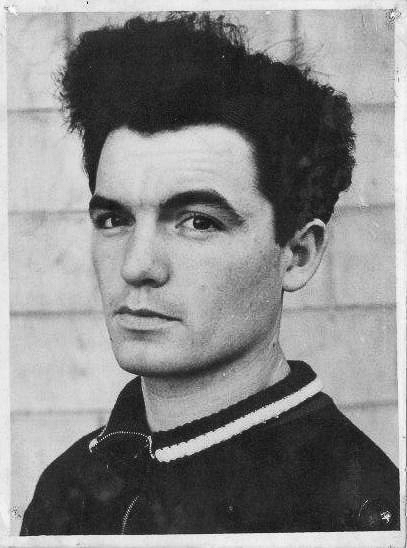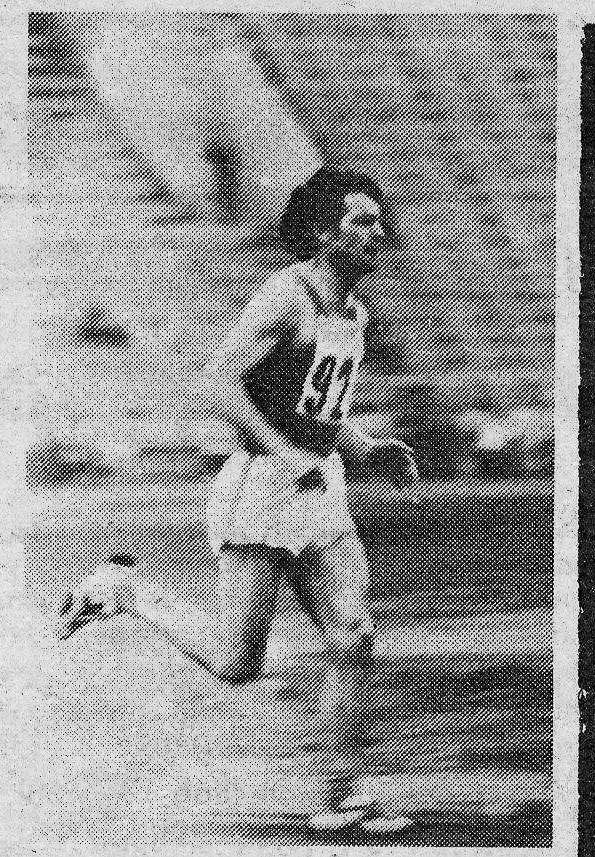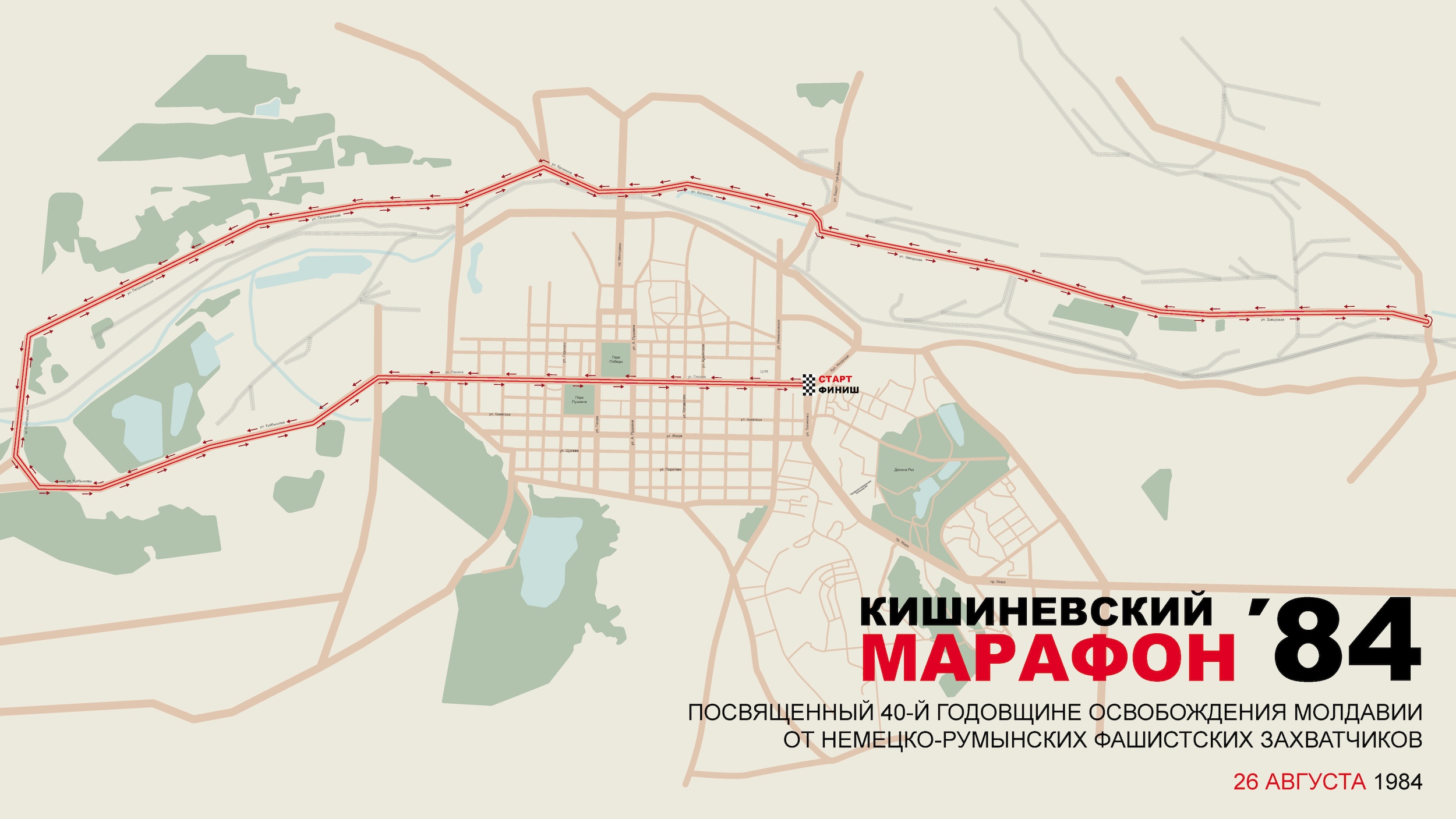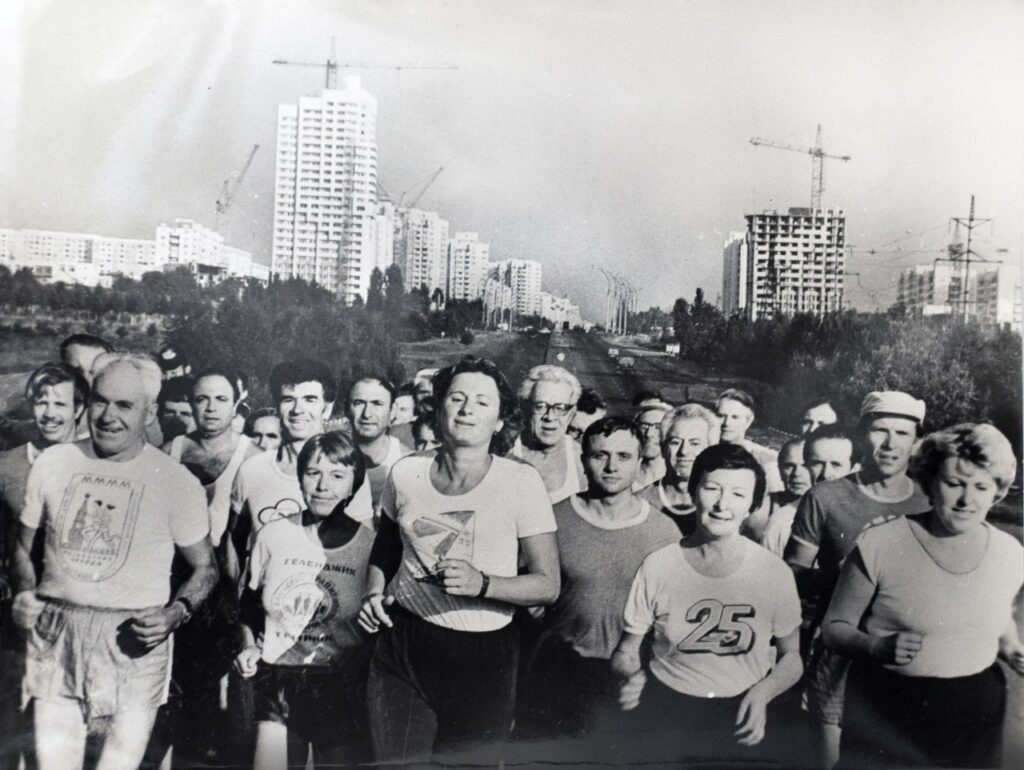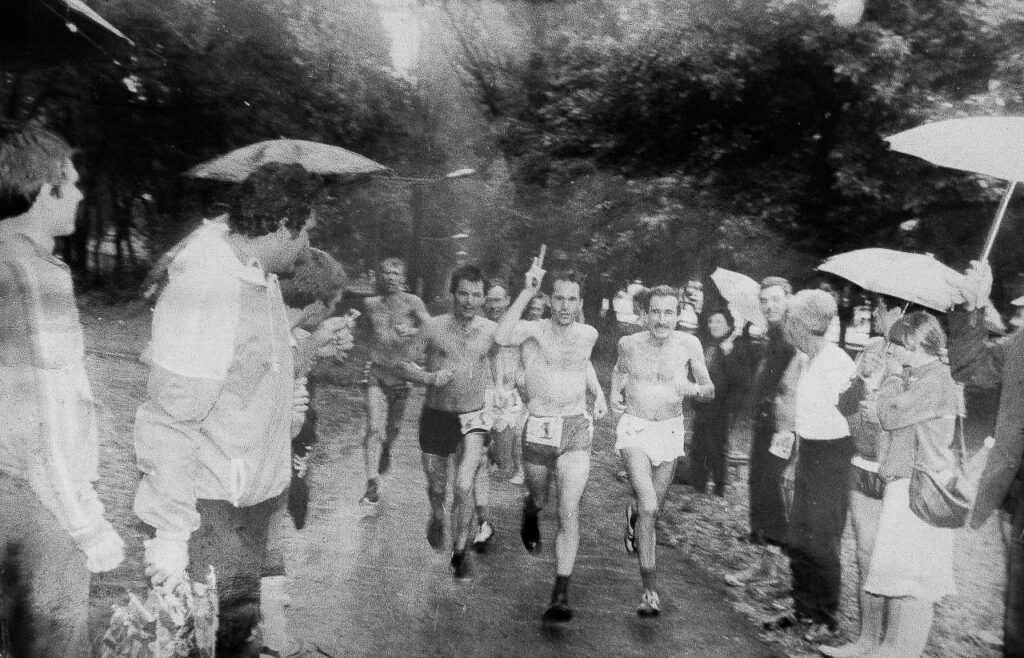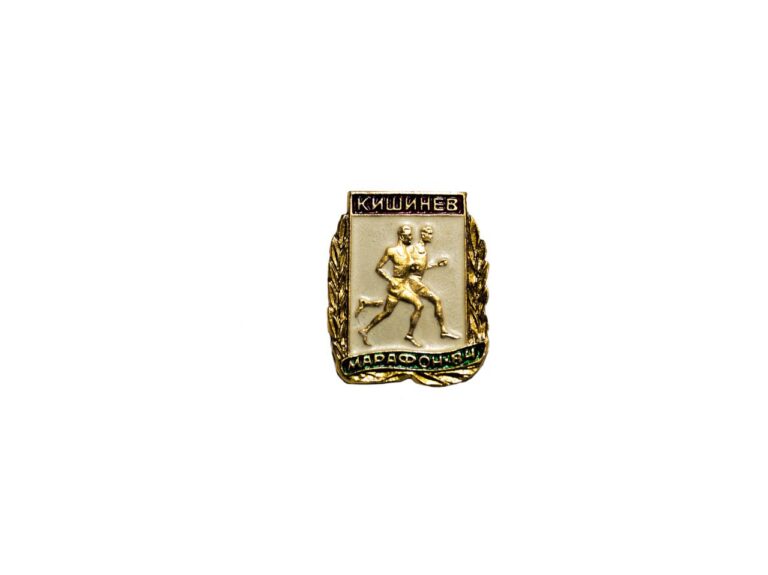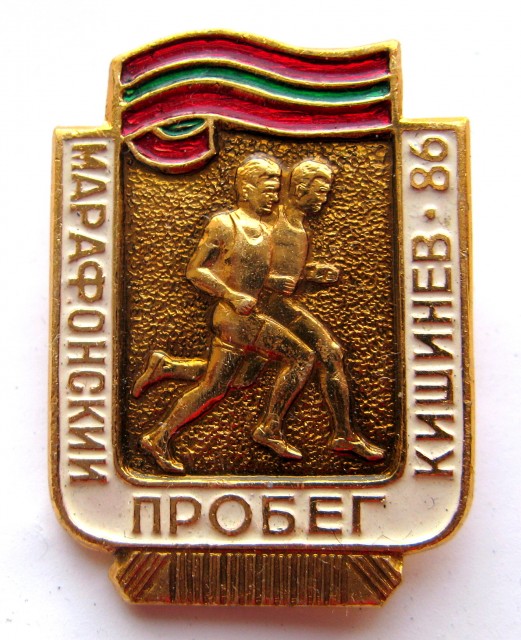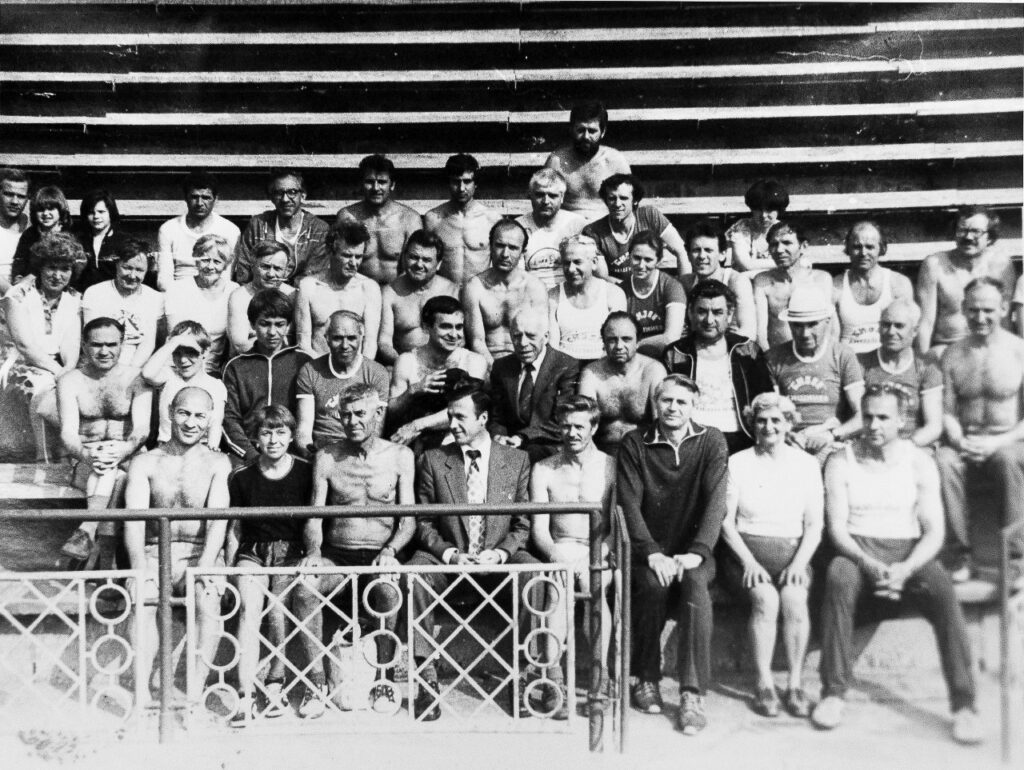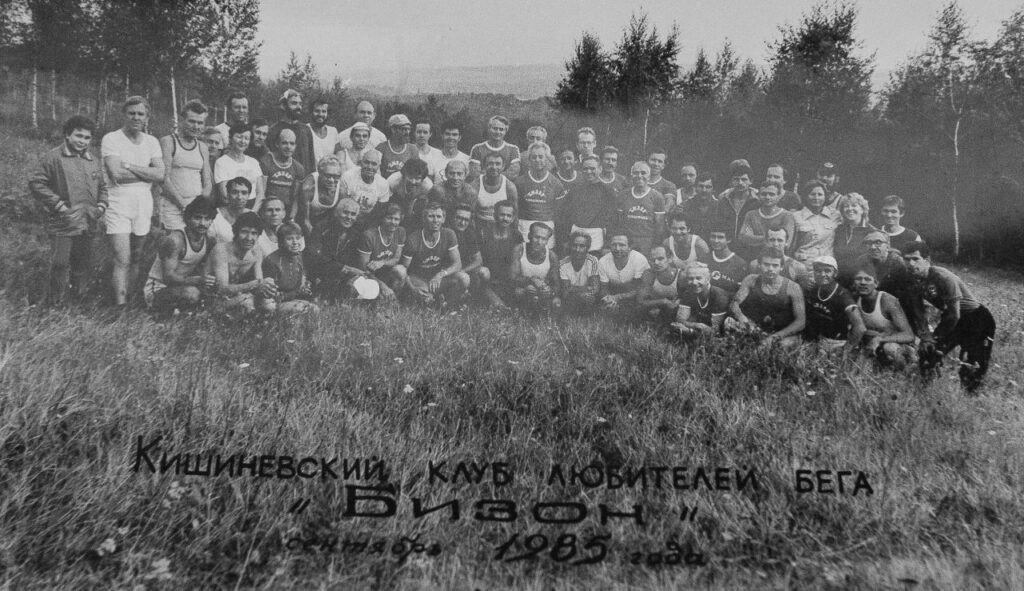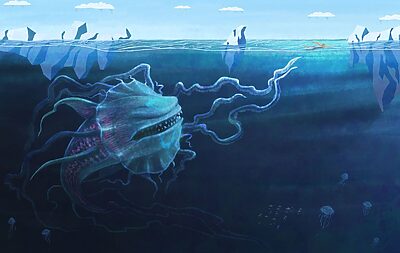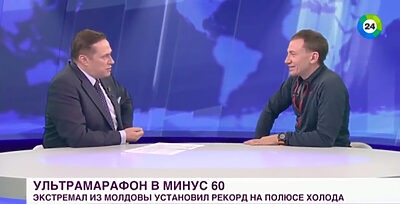On the 26 of April 2015 we organized and conducted the first International Chisinau Marathon. And only after the contented participants had gone home with their well-deserved medals, we learned that the marathon turned out not the first one. How’s that? That’s how!
And so, we started to dig and delve… We scoured the web, phoned the athletes, read the forums, started looking for participants. I must say that many of them are no longer alive, others have left Moldova for good, and still others, for some reason, refused to get in touch. But we painstakingly managed to restore the history of the very first Chisinau marathon.
As it turned out, a marathon had already been held in Chisinau, only it was back in 1984. Athletes from many cities of the USSR came to Chisinau then to run 42 km. As a matter of fact, our marathon was the first in the history of independent Moldova, and the marathon of 1984 – the first in Soviet Moldavia.
Prehistory
Track and field was a very highly developed sport in Moldavia. For example, in 1983, Chisinau hosted the 8th Spartakiad of Peoples of the USSR, and Valeriy Utsa, an experienced runner, was among the participants. According to him, both athletes from specialized sports club and amateur runners took part in the races. “About 600 people attended the 1983 marathon run. We were seriously preparing for every competition.”
In 1981 the “Bison” running amateurs club was founded, which played a very important role in the emergence of the Chisinau marathon. One of the marathon organizers was Victor Podrazhanski. In his book “Through Bison’s eyes”, he mentions those who organized the competition – the City Sports Committee, the “Evening Chisinau” newspaper and the City Komsomol Committee.
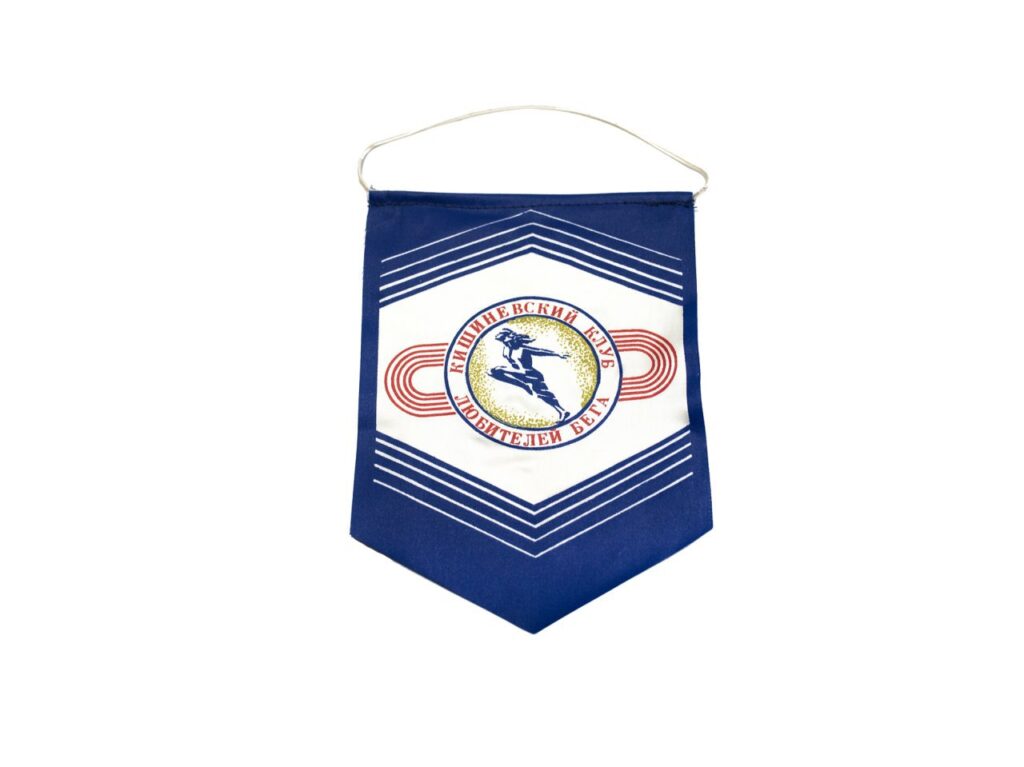
Of course, this is very different from today, when we almost spent the night in the Chisinau City Hall to win permission for conduction of the marathon. And if we consider all the administrative levers and the enormous influence of the newspaper, which was used back in 84, we can say that we were lucky indeed.
It is also specific that the attitude of officials to the conduction of the marathon did not change much: in ‘84, the course of the first route was also changed. “We have planned several courses, including the central highways. We wanted as many residents of our city as possible to see running older people in good physical shape, thanks to active physical education classes, and be willing to follow their example. At the same time, we tried to bring as little interference as possible into the usual schedule of urban transport. But both motions were lost. Tricolich referred to objections from the traffic police”, – writes Podrazhansk
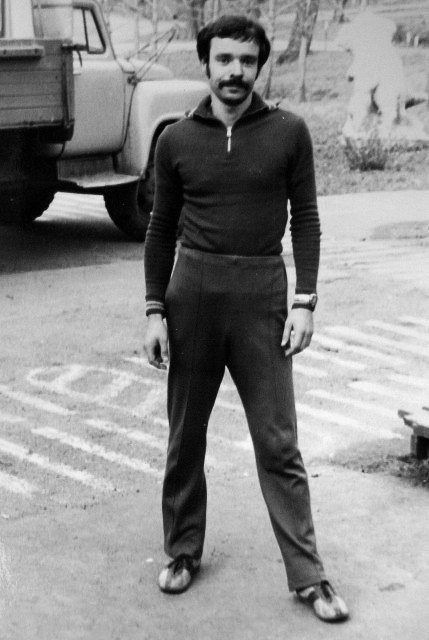
After all the problems solved, the course was established as follows:
“The start and finish were set on the square at the beginning of Lenin St., in front of the Academy of Sciences, then along Kuybyshev St. (now Calea Iesilor St.) to the traffic police post, then turn to the right, on Petrikanskaya St. and the highway under construction along the river Byk to the bridge connecting Zavodskaya St. with Botanica district. There was the middle of the course and the turning point.”
In fact, the route for the most part passed through the industrial zone. In addition, the competition program also included the 10 and 20 km races.
Marathon participants of those times agree that the races did not interfere much with urban traffic.
“There were fewer cars then, and traffic was not so heavy as today. In fact, we didn’t interfere too much”, says Gennady Andronic, a participant in the 1986 Chisinau Marathon.
A month before the start, 6 athletes took a training run to test new track. “We started at 6.30 in the morning. We kept a moderate pace, so we managed to cross 10 km in 54 minutes, as a group. I covered the distance without great strain in ~ 3:35”, – says Podrazhanski.
Start
The Chisinau Marathon was scheduled for August 26, “in conjunction with the 40th anniversary of the liberation of Moldavia from the German-Romanian fascist invaders.” The popular edition “Soviet Sport” wrote about the Chisinau Marathon, and among those who decided to run in Chisinau were athletes from Odessa, Sevastopol, Nizhny Novgorod, Tashkent, Samara and Rostov-on-Don. According to the organizers’ estimates, the Chisinau Marathon-84, was attended by 400 people. At the same time, about 200 of them crossed the distance of 42 km.
The participants’ stories indicate that the behavior on the eve of the marathon doesn’t differ much from today’s “winning approach”:
“It’s crucial to get a good night’s sleep before the run. If the race starts at 10 or 11 in the morning, then you should definitely eat something in the evening. What you eat in the morning affects your result. So, you can have a cup of tea, eat some cookies and go!” – says Marathon-84 participant Valeriy Utsa.
Unlike modern marathons, with a Sport Expo operating in the sports area, there were literally no amenities at the first Chisinau marathon. No toilets, no storage rooms, no changing facilities. As Victor Podrazhanski recalls, he used his work permit of the Academy of Sciences member and arranged with the receptionist to allow him and several of his comrades into the lobby. “We changed clothes there, left our things and could use the toilet and wash ourselves.” Victor notes that the weather for the race was not the most comfortable: “It was not very hot by our standards, 24-250, but the humidity was high. It was hard to run within the industrial zone along an empty concrete road baked by the August sun, breathing in bad odours.”
”The winners’ results were not quite impressive, but overall decent. The front-runner in men’s category was Anatoly Aryukov from Gorky (2:21.0), while the best of Chisinau residents (3rd place) became Yura Nifontyev —specialist in orienteering. The first in women’s category was the future prima of the Moldavian marathon runners, Valentina Enaki (the newspaper reports the result as being 3: 21.44 but it’s rather misprint, as it should be much less).”
Of course, marathon runners nowadays have much more comfortable conditions: feeding stations along the route, a relax zone where they can relax in comfortable bean bags, as well as kinetic therapists who can “revive” them with a massage. In 1984 conditions were very harsh: “I was very thirsty after the finish. Well, at least tap water was available. And I was really obsessed with the idea of having a whole watermelon. Igor Moskalev said he would take care of it and sent the young guys on bicycles, who kept accompanying him, to the market. The other participants quenched their thirst with soda from nearby stores.”
Gennady Andronic, a participant in the 1986 Chisinau Marathon, remarks that the equipment in the Soviet era was far from ideal, unlike nowadays: “I then rubbed my legs to blood because my shorts were of very poor quality.”
As Podrazhanski notes, the competition as a whole went well, festively and fairly organized. And just like the International Chisinau Marathon organizers, the Chisinau Marathon organizers came to the conclusion that the race should be held in the fall. The date was made to coincide with the City Day, which is celebrated in early October.
It became popular and gathered hundreds of participants from many cities in the country. During the marathon, a “school” distance was added: 1-5 km, which pupils from Chisinau schools ran. Despite the fact that the total number of the Chisinau marathon participants reached several thousand, no brilliant results were shown on the Chisinau routes.
Afterword
As we prepared this story, studied various sources and interviewed the participants, we came to a simple conclusion: whatever the times, whatever administrative resources are available, the organization of any large-scale event is hard work, which only a team of like-minded people can do. There will always be obstacles, even though the state supports and promotes sports. There will always be an official who will say that a marathon is not needed, that it’s unnecessary to restrict the traffic for the sake of sports, that one should run in specially designated areas, and so on and so forth… They can say anything. But in the end, the whole struggle, pursued by the organizers, will remain behind the scenes, and the Chisinau marathon participants will have the opportunity to run… Someone will run his first 10 km, someone else will be running his 40th marathon. At least, I’m sure about that.
